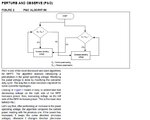ashare
Newbie level 6

- Joined
- Mar 31, 2011
- Messages
- 12
- Helped
- 0
- Reputation
- 0
- Reaction score
- 0
- Trophy points
- 1,281
- Activity points
- 1,412
Hi Everyone,
I have been reading about MPPT charge controllers and their advantages over ordinary ones (PWM based??). My question is how is an MPPT charge controller superior than a buck-boost (BB) converter chip or for that matter any converter chip? The MPPT algorithm takes in parameters like input current and input voltage and calculates the power successively and compares with the previous reading. The BB controllers also have feedback in the output which regulates the voltage at the load and the load draws as much current it requires from the circuit (based on current limits set). Based on the current mode and voltage mode feedback, the power switch's duty cycle is varied in a BB converter as well. Doesn't MPPT also vary the duty cycle of the power switch in a similar manner. How is it maximizing power from the panel by doing so. Please let me know, if my question lacks clarity.
Thank You.
Regards,
ashare
I have been reading about MPPT charge controllers and their advantages over ordinary ones (PWM based??). My question is how is an MPPT charge controller superior than a buck-boost (BB) converter chip or for that matter any converter chip? The MPPT algorithm takes in parameters like input current and input voltage and calculates the power successively and compares with the previous reading. The BB controllers also have feedback in the output which regulates the voltage at the load and the load draws as much current it requires from the circuit (based on current limits set). Based on the current mode and voltage mode feedback, the power switch's duty cycle is varied in a BB converter as well. Doesn't MPPT also vary the duty cycle of the power switch in a similar manner. How is it maximizing power from the panel by doing so. Please let me know, if my question lacks clarity.
Thank You.
Regards,
ashare





